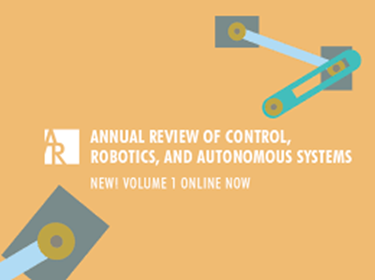Robot Model Identification and Learning: A Modern Perspective
IF 14
1区 计算机科学
Q1 AUTOMATION & CONTROL SYSTEMS
Annual Review of Control Robotics and Autonomous Systems
Pub Date : 2023-10-20
DOI:10.1146/annurev-control-061523-102310
引用次数: 0
Abstract
In recent years, the increasing complexity and safety-critical nature of robotic tasks have highlighted the importance of accurate and reliable robot models. This trend has led to a growing belief that, given enough data, traditional physics-based robot models can be replaced by appropriately trained deep networks or their variants. Simultaneously, there has been a renewed interest in physics-based simulation, fueled by the widespread use of simulators to train reinforcement learning algorithms in the sim-to-real paradigm. The primary objective of this review is to present a unified perspective on the process of determining robot models from data, commonly known as system identification or model learning in different subfields. The review aims to illuminate the key challenges encountered and highlight recent advancements in system identification for robotics. Specifically, we focus on recent breakthroughs that leverage the geometry of the identification problem and incorporate physics-based knowledge beyond mere first-principles model parameterizations. Through these efforts, we strive to provide a contemporary outlook on this problem, bridging classical findings with the latest progress in the field. Expected final online publication date for the Annual Review of Control, Robotics, and Autonomous Systems, Volume 7 is May 2024. Please see http://www.annualreviews.org/page/journal/pubdates for revised estimates.机器人模型识别与学习:现代视角
近年来,机器人任务的复杂性和安全性日益增加,这凸显了准确可靠的机器人模型的重要性。这一趋势使人们越来越相信,只要有足够的数据,传统的基于物理的机器人模型可以被经过适当训练的深度网络或其变体所取代。与此同时,人们对基于物理的仿真重新产生了兴趣,这得益于模拟器在模拟到真实范式中广泛使用来训练强化学习算法。本综述的主要目的是对从数据中确定机器人模型的过程提出统一的观点,通常称为系统识别或不同子领域的模型学习。该评论旨在阐明遇到的关键挑战,并强调机器人系统识别的最新进展。具体来说,我们关注的是最近的突破,这些突破利用了识别问题的几何学,并结合了基于物理的知识,而不仅仅是第一原理模型参数化。通过这些努力,我们努力为这个问题提供一个当代的观点,将经典的发现与该领域的最新进展联系起来。预计《控制、机器人和自主系统年度评论》第七卷的最终在线出版日期是2024年5月。修订后的估计数请参阅http://www.annualreviews.org/page/journal/pubdates。
本文章由计算机程序翻译,如有差异,请以英文原文为准。
求助全文
约1分钟内获得全文
求助全文
来源期刊
CiteScore
28.30
自引率
2.20%
发文量
25
期刊介绍:
The Annual Review of Control, Robotics, and Autonomous Systems offers comprehensive reviews on theoretical and applied developments influencing autonomous and semiautonomous systems engineering. Major areas covered include control, robotics, mechanics, optimization, communication, information theory, machine learning, computing, and signal processing. The journal extends its reach beyond engineering to intersect with fields like biology, neuroscience, and human behavioral sciences. The current volume has transitioned to open access through the Subscribe to Open program, with all articles published under a CC BY license.

 求助内容:
求助内容: 应助结果提醒方式:
应助结果提醒方式:


